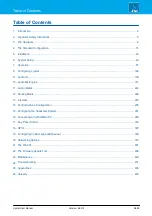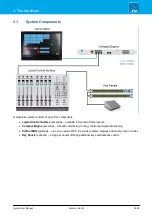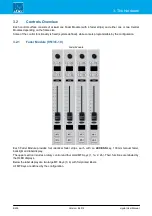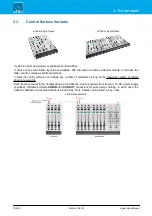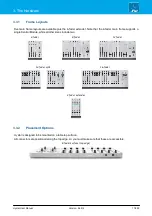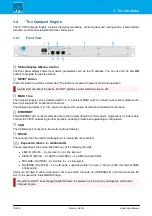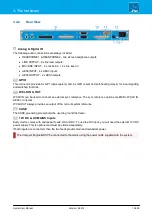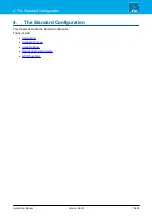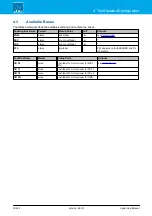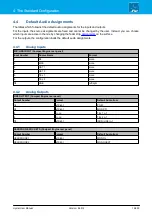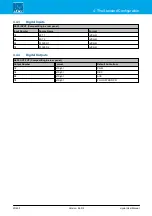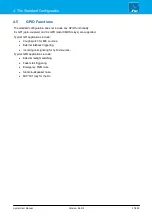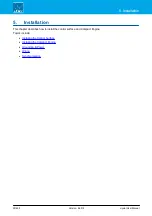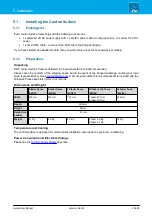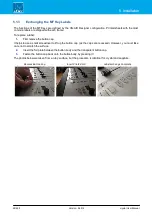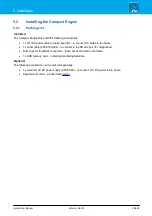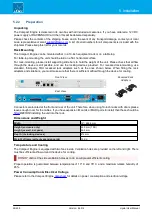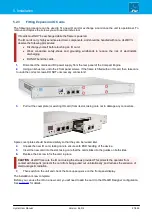
crystal User Manual
Version: 6.6.0/2
12/459
3. The Hardware
3.4
The Compact Engine
The 19”/1RU Compact Engine contains the signal processing, control system and routing matrix. It also handles
all audio, control and external Wordclock connections.
3.4.1
Front View
1
Status Display & Menu Control
The front panel display shows local device parameters such as the IP address. You can use the
>>
and
OK
buttons to navigate through the menus.
2
RESET button
Press this button to perform a warm start. The button is recessed to prevent accidental operation.
A warm start will reboot the device. Do
NOT
perform a warm start while live on air!
3
MADI 1 to 4
The Compact Engine can be delivered with 0, 2 or 4 external MADI ports to connect multi-channel digital audio.
Each port supports 64 bi-directional channels.
The odd/even port pairs (1/2, 3/4) can be configured to operate as main and redundant connections.
4
ETHERNET
The ETHERNET port connects other devices to the Compact Engine control system. Applications include remote
control via TCP/IP; networking to other products; updating firmware and uploading a configuration.
5
CAN
The CAN bus port connects to the control surface frame(s).
6
RS 422
The serial port can be used for debugging. It is usually left unconnected.
7, 8
Expansion Slots x 2 - additional IO
The two expansion slots can be fitted with any of the following IO cards:
·
LINE IO (952/31) - 8 x line level in + 8 x line level out.
·
AES3 IO (952/32) - 4 x AES3 in (with SRC) + 4 x AES3 out (with SRC).
·
MIC/LINE IO (952/36) - 4 x mic/line in + 4 x line level in.
·
RAVENNA IO (952/38) - 2 x AoIP ports, supporting either 8 in/out or 64 in/out with the internal MADI
bridge option.
Cards can be fitted to either slot position, but to use all 64 channels of a RAVENNA IO card it must use the left
slot (7) to support the internal MADI bridge.
IO cards must
NOT
be exchanged while the frame is powered, as to do so may damage the card and/or
Compact Engine.



